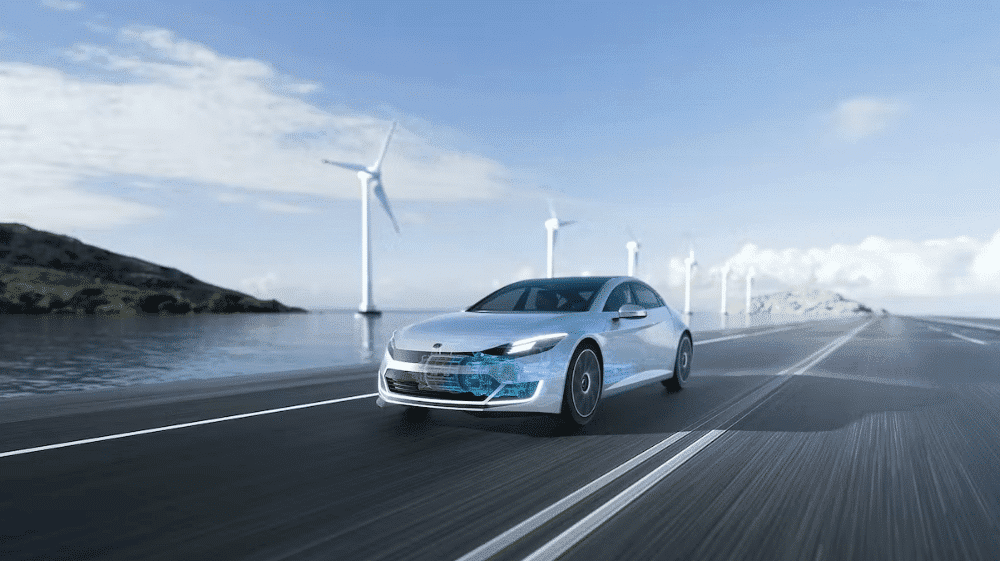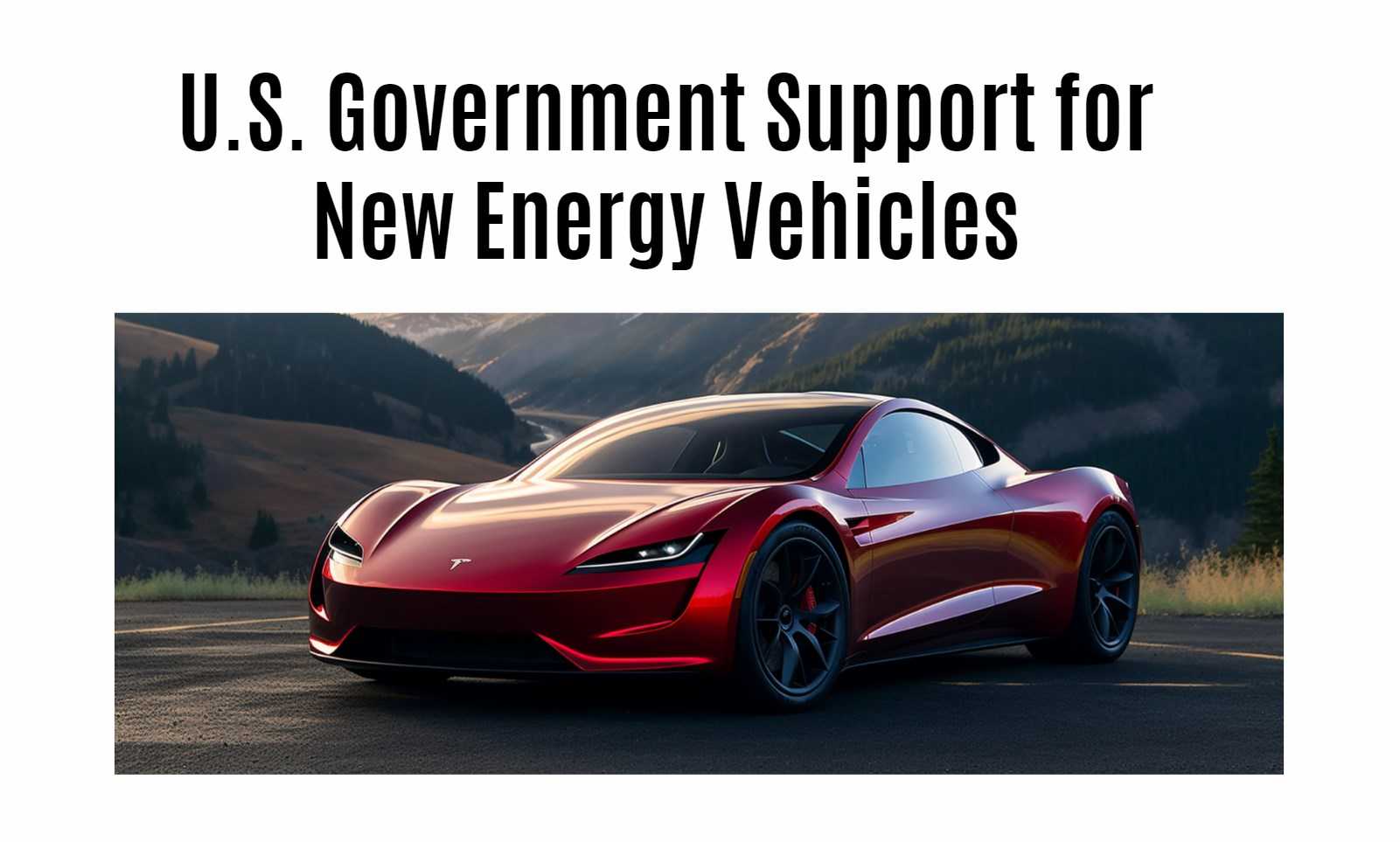The United States is rapidly advancing its development of new energy vehicles (NEVs), driven by a combination of technological innovation, environmental concerns, and economic opportunities. This article will explore the key factors propelling the U.S. towards a future dominated by electric and alternative fuel vehicles, including government policies, consumer demand, and advancements in battery technology.
The Push for Environmental Sustainability
1. Climate Change Initiatives
One of the primary motivations behind the U.S. push for new energy vehicles is the urgent need to address climate change. The transportation sector is one of the largest contributors to greenhouse gas emissions. By transitioning to NEVs, the U.S. aims to significantly reduce its carbon footprint and meet international climate agreements.
- Government Goals: The Biden administration has set ambitious targets for reducing emissions, including a goal of having 50% of all new vehicle sales be electric by 2030.
2. Air Quality Improvement
In addition to combating climate change, NEVs contribute to improving air quality in urban areas. Traditional internal combustion engine vehicles emit pollutants that can harm public health. By promoting electric vehicles (EVs) and other clean technologies, cities can reduce smog and respiratory issues associated with vehicle emissions.
Economic Incentives for Transitioning to NEVs
1. Job Creation in the Green Economy
The shift towards new energy vehicles is not just an environmental initiative; it also presents significant economic opportunities. The development and manufacturing of EVs create jobs across various sectors:
- Manufacturing: Building electric motors, batteries, and other components requires skilled labor.
- Research and Development: Innovation in battery technology and energy efficiency leads to high-tech jobs in engineering and design.
2. Investment in Infrastructure
To support the growth of NEVs, substantial investments are being made in charging infrastructure:
- Public Charging Stations: Expanding the network of charging stations makes EV ownership more feasible for consumers.
- Grid Improvements: Upgrading the electrical grid is essential for accommodating increased electricity demand from charging stations.
Technological Advancements Driving NEV Development
1. Battery Technology Innovations
Battery technology is at the heart of new energy vehicle development. Significant advancements have been made in lithium-ion batteries, particularly those using LiFePO4 chemistry:
- Higher Energy Density: New battery designs offer greater energy storage capacity, enabling longer ranges for electric vehicles.
- Faster Charging Times: Innovations in fast-charging technology reduce downtime for EV users, making them more convenient than ever.
2. Autonomous Driving Technologies
The integration of autonomous driving technologies into NEVs is another factor driving their rapid development:
- Safety Enhancements: Autonomous features can reduce accidents caused by human error.
- Traffic Efficiency: Self-driving cars can optimize traffic flow and reduce congestion.
Government Policies Supporting NEV Development
1. Tax Incentives and Subsidies
To encourage consumers to purchase new energy vehicles, federal and state governments offer various incentives:
- Tax Credits: Buyers of electric vehicles can benefit from tax credits that significantly lower the upfront cost.
- Grants for Manufacturers: Financial support for manufacturers developing new technologies helps accelerate innovation.
2. Regulatory Standards
The U.S. government has implemented stricter fuel economy standards aimed at reducing emissions from conventional vehicles:
- Corporate Average Fuel Economy (CAFE) Standards: These regulations compel automakers to improve fuel efficiency or face penalties.
Consumer Demand for New Energy Vehicles
1. Growing Awareness of Environmental Issues
As consumers become more aware of environmental issues, demand for sustainable transportation options has surged:
- Shift in Preferences: Many consumers are actively seeking out electric vehicles due to their lower environmental impact compared to traditional cars.
2. Cost Savings on Fuel and Maintenance
Electric vehicles often come with lower operating costs compared to gasoline-powered cars:
- Fuel Savings: With electricity generally cheaper than gasoline on a per-mile basis, EV owners enjoy significant savings.
- Lower Maintenance Costs: Electric motors have fewer moving parts than internal combustion engines, leading to reduced maintenance needs.
Data Chart: Comparison of New Energy Vehicle Adoption Rates
| Year | Total EV Sales (Units) | Market Share (%) | Average Range (Miles) | Charging Infrastructure (Stations) |
|---|---|---|---|---|
| 2020 | 300,000 | 2% | 250 | 30,000 |
| 2021 | 500,000 | 3% | 300 | 40,000 |
| 2022 | 800,000 | 5% | 350 | 50,000 |
| 2023 | 1,200,000 | 7% | 400 | 70,000 |
Latest News on New Energy Vehicles in the USA
As of October 2024, recent developments highlight the accelerating pace of new energy vehicle adoption:
Innovative Partnerships
Automakers are increasingly forming partnerships with tech companies to enhance battery technology and autonomous driving capabilities.
State-Level Initiatives
Several states are implementing their own aggressive targets for EV adoption and charging infrastructure expansion, complementing federal efforts.
FAQs About New Energy Vehicles
1. What types of new energy vehicles are available?
New energy vehicles include fully electric vehicles (EVs), plug-in hybrid electric vehicles (PHEVs), and hydrogen fuel cell vehicles.
2. Are there any downsides to owning an electric vehicle?
While EVs offer many benefits, potential downsides include limited range compared to gasoline cars and longer refueling times at charging stations.
3. How long does it take to charge an electric vehicle?
Charging times vary based on the charger type: Level 1 chargers may take several hours while Level 3 fast chargers can recharge most EVs in under an hour.
4. What incentives are available for purchasing an electric vehicle?
Incentives vary by state but often include tax credits, rebates, and access to carpool lanes.
Conclusion: The Future of New Energy Vehicles in the USA
In conclusion, the rapid development of new energy vehicles in the United States is driven by a combination of environmental concerns, economic opportunities, technological advancements, and supportive government policies. As we move towards a more sustainable future, understanding these dynamics will help consumers make informed choices about their energy solutions.At Redway Battery, we specialize in manufacturing high-quality lithium LiFePO4 batteries tailored to meet diverse needs across various applications. For quick quotes on custom solutions or wholesale inquiries, feel free to contact us today!




